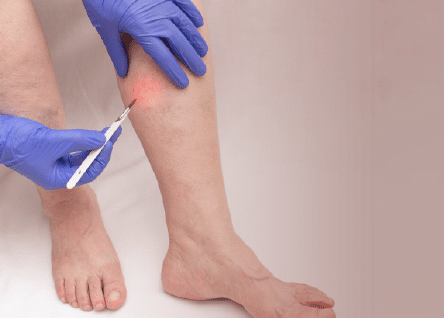Often, patients who deal with the condition known as chronic venous insufficiency end up facing nagging symptoms, discomfort, and aesthetic challenges that come with swelling and bulging veins.
Thankfully, no matter the cause of chronic venous insufficiency, many medical providers offer patients effective procedures that can treat the root cause of their condition as well as remedy the side effects of their condition (like varicose veins).
Though there are many treatments and procedures available, many doctors turn to a specific treatment known as a Phlebectomy. But what is this unique procedure, how does it work, and further, what can patients expect if they plan to undergo this procedure as a treatment for their chronic venous insufficiency?
This guide will detail a few of the basic, need-to-know details about the medical procedure known as a Phlebectomy.

What is a Phlebectomy?
A phlebectomy, which is also referred to as an ambulatory phlebectomy, is a surgical procedure that removes an abnormal vein through an incision in the skin.
Medical providers will make a small but specific incision where, using special tools, they can seamlessly remove irregular, abnormal, and ineffective veins from under the surface of the skin. Normally, a surgical hook is used to adhere to a section of the vein and is then used to remove the vein from the skin. The idea behind this treatment is the same as others, to remove the vein causing issues in order to redirect blood flow to healthy veins and improve circulation.
A phlebectomy also helps to eliminate the size and scope of bulging, swelling veins by removing them altogether. This procedure is best for those who are looking to treat varicose veins that are visible and just under the skin.
How Does a Phlebectomy Work?
Unlike other treatment options out there–like VenaSeal, Radiofrequency Ablation (RFA), Varithena Foam Scleropathy, and more–a phlebectomy is a minimally invasive but surgical procedure. Unlike these other treatments, this type of procedure can minimize the risk of side effects from the procedure, like skin necrosis, numbness, nerve damage, hyperpigmentation, and more.
If done properly, a phlebectomy incision will be incredibly small and should heal without any scars or signs of surgery. This treatment is incredibly effective and comes with minimal risk. Unlike other non-invasive, non-surgical treatments, it will likely require anesthesia. It’s important to note that recovery time from this procedure will also be lengthier than other non-surgical treatments. While treatments like RFA or VenaSeal will take anywhere from a few hours to a few days to recover, a phlebectomy will require anywhere from 1-3 weeks for patient recovery.